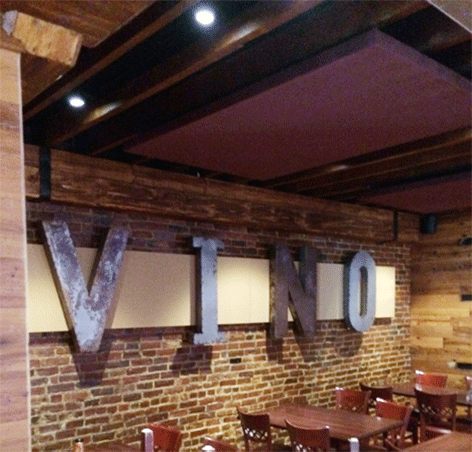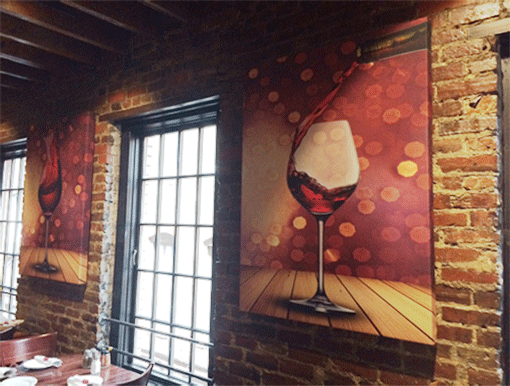Schools - Colleges - Educational Facilities
From Private to Public Schools, Colleges, Libraries, and Other Educational Facilities


Fundamental to the learning process is the ability of a student to hear and understand what the teacher is saying. But a noisy classroom can stop learning in its tracks, making both hearing and comprehension difficult.
Sonic-Shield has treated hundreds of classrooms, libraries, school auditoriums, and educational facilities throughout the years with complete satisfaction!
Superfluous noise promotes distraction and disengagement in our children, because think about it: If they can’t hear, how can they learn? If you can’t hear them, how can you teach and answer crucial questions? The ability for a student to hear and understand their teacher comfortably is crucial for the learning experience.
The result? Many students are told they may have a learning difficulty when the real problem may be poor classroom acoustics. Many children shy away from asking questions, even the simple question of asking someone to speak up.
Acoustical Treatments Made In The U.S.A
Understanding Classroom Noise - And How To Stop The Noise!
Classroom Noise: The Causes
Classroom noise can have many causes. The Acoustical Society of America has identified background classroom noise as any auditory disturbance that interferes with what a listener wants and/or needs to hear. Based on the dozens of inquiries we get every year from schools all over the country, we can categorize background noise sources into three main categories:
-
Noise within the classroom or specific space where teaching is taking place – like a multifunction room – caused by voices and/or mechanical noise from air conditioning, heating, ventilation or refrigeration, and more.
-
Noise from within the building itself, bleeding into the classroom from hallways, adjacent classrooms, or centralized noise sources.
-
Noise from outside the building from traffic, airplanes, playground noise, landscaping noise from lawn mowers and leaf blowers, construction noise, and mechanical noise all heard through the building structure itself.
In addition to background noise, another common issue is poor acoustics.
Poor acoustics can be caused by too much echo or too much reverberation – how sound waves act when they stay in a room. Such sound waves can stay in a classroom and reverberate as they bounce off the hard surfaces of chairs, desks, floors and walls.
Classroom Noise: The Impact
As such, it’s important to keep the classroom as quiet as possible for all children. A quiet classroom helps teachers and students, especially if a student has:
-
hearing loss in one or both ears
-
a learning disability
-
auditory processing disorder
-
speech and language delay
-
ADD/ADHD
-
Trouble hearing due to muffled voices hidden under masks
Teachers also benefit from good classroom acoustics as talking in a loud classroom strains the teacher’s voice and may lead to voice problems.
Classroom Noise: Solutions
It’s important to think about background noise and reverberation in any space used for learning. The best way to reduce the echo and reverberation in a classroom is to install our REVRB Acoustical products throughout the room. Adding REVRB acoustical panels and baffles to the room will absorb the noise and reduce the echo and reverberation. The process is easy all we need is the following information:
-
Length, width, and height of the room, or a room layout with dimensions.
-
The room make up (photos of the room will work)
-
The use of the room
-
Any wall or ceiling restrictions (what walls or ceilings can we not utilize)
-
Other noise concerns you might have within the room.
Once we have that information, we can make a complete custom package to determine your current reverberation and what it takes to get your reverberation down. We are able to be very specific when we calculate your room acoustics, narrowing it down to a tenth of a second!
Other simple ways to make a classroom quieter in the meantime include:
-
Placing rugs or carpet in the room
-
Placing tables at an angle around the room instead of in rows
-
Turning off noisy equipment when it’s not in use
-
Replacing noisy light fixtures
-
Showing students how hard it can be to hear when many children talk at the same time
For more permanent and effective reductions in reverberation and echoing, the installation of absorbent materials, such as our line of REVRB® acoustical panels, baffles and banners, have proven to be effective solutions to noise problems throughout school campuses, from classrooms, to gymnasiums, to multipurpose rooms.
 |  |  |  |
|---|---|---|---|
 |  |  |

